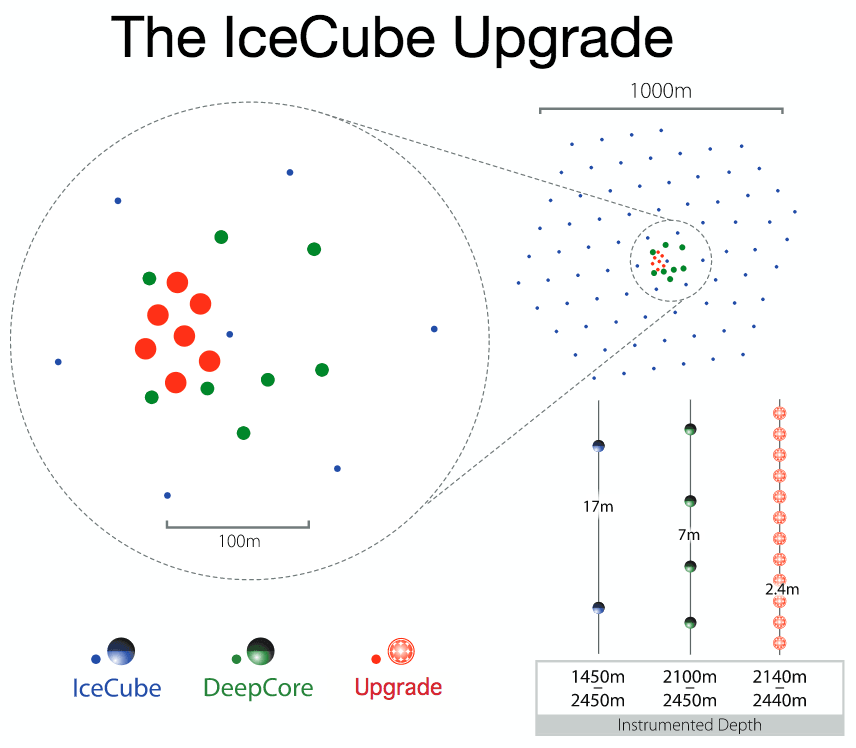Every two years, IceCubers have a recurring rendezvous at the Neutrino conference. At this meeting, which includes everything from neutrino physics to neutrino astronomy, experts present the latest results from experiments around the world and learn about new detectors and discoveries. This year, the neutrino community is meeting in Heidelberg, Germany, June 4–9.

The 2018 IceCube delegation at the Neutrino conference includes 22 researchers presenting 20 posters and two plenary talks.
Yesterday, Tyce DeYoung from Michigan State University presented preliminary and current results in neutrino physics from both IceCube and ANTARES. Neutrino telescopes using both atmospheric and astrophysical neutrinos can probe oscillation physics at baselines and energies inaccessible to long-baseline or reactor neutrino experiments and provide a unique sensitivity to searches for new physics. IceCube has measured neutrino oscillations at the highest energies to date, whose results are compatible and competitive with dedicated neutrino experiments. As researchers work on improving these results, searches for tau neutrino appearance and physics beyond the standard model also show increased sensitivity and great precision. Searches for sterile neutrinos and measurements of the neutrino cross section using Earth absorption have already resulted in world-best measurements, and additional IceCube results on other searches for new physics and improvements to the high-energy neutrino oscillation parameters are expected soon. Scientists are also waiting for improved detectors, including an expected upgrade of IceCube, to push these measurements to the next frontier.

Today, Ignacio Taboada from Georgia Tech presented the latest results in neutrino astronomy, including new preliminary results in searches for the highest energy neutrinos in the universe and their sources. Multimessenger studies triggered by IceCube and ANTARES alerts, searches for tau neutrinos, and a better understanding of the highest-energy neutrinos in IceCube are some of the highlights of this talk. During the last few months, mutimessenger searches, including joint searches with gravitational waves, have added real-time follow-ups that increase the potential of observing new interesting phenomena in the extreme universe. Adding more data to the searches for the highest energy neutrinos in IceCube confirms the astrophysical nature and the extragalactic origin of many of these neutrinos. This data is also providing important new information to understand the composition of the astrophysical neutrino flux and the interactions of neutrinos with Antarctic ice. Taboada’s summary shows that, although neutrino sources remain unidentified, preliminary studies are closing in on them.
Info Neutrino 2018